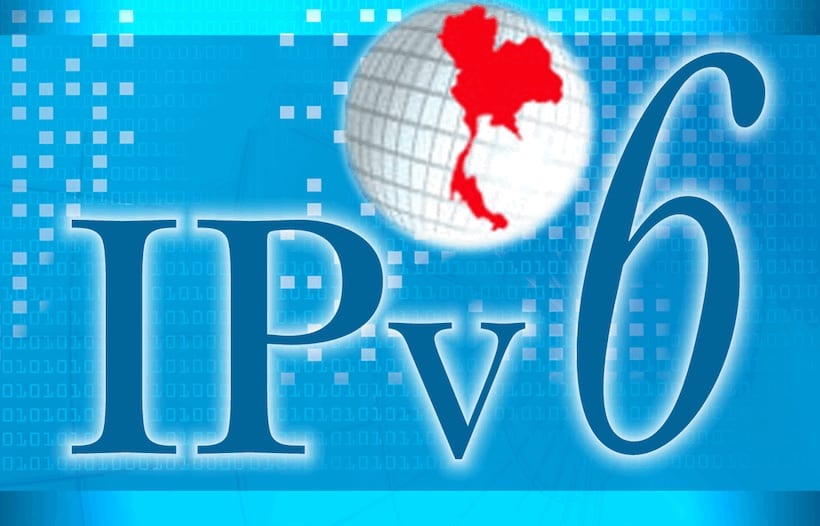IPv6 – Information technology has registered a handsome growth in the past few years. This is a dynamic sector, as technology keeps on evolving. One needs to catch up with the latest to keep themselves updated with sector. Before discussion of any version of Internet Protocol, let us understand what is Internet Protocol (IP)? IP (short for Internet Protocol) specifies the technical format of packets and the addressing scheme for computers to communicate over a network. Most networks combine IP with a higher-level protocol called Transmission Control Protocol (TCP), which establishes a virtual connection between a destination and a source.
IP by itself can be compared to something like the postal system. It allows you to address a package and drop it in the system, but there’s no direct link between you and the recipient. TCP/IP, on the other hand, establishes a connection between two hosts so that they can send messages back and forth for a period of me
Now, It looks good to understand Internet Protocol version 6 (IPv6) as it is the most recent version of the Internet Protocol (IP), the communications protocol that provides an identification and location system for computers on networks and routes traffic across the Internet.
IPv6 (Internet Protocol Version 6) is also called IPng (Internet Protocol next generation) and it is the newest version of the Internet Protocol (IP) reviewed in the IETF standards committees to replace the current version of IPv4 (Internet Protocol Version 4).
Advertisement
The official name of IPng is IPv6, where IP stands for Internet Protocol and v6 stands for version 6.
Why need of IPv6 arise?
The most obvious answer is that IPv4 is out of IP addresses. it does not utilizes 128-bit addressesIPv6 uses 128-bit addresses and is capable of 340 undecillion addresses. That is 340 mes 10 to the 36th power or 340 trillion trillion trillion possible IP addresses.
What is IPv6 (Internet Protocol Version 6)?
IPv6 is the successor to Internet Protocol Version 4 (IPv4). It was designed as an evolutionary upgrade to the Internet Protocol and will, in fact, coexist with the older IPv4 for some me. IPv6 is designed to allow the Internet to grow steadily, both in terms of the number of hosts connected and the total amount of data traffic transmitted.
IPv6 is often referred to as the “next generation” Internet standard and has been under development now since the mid-1990s. IPv6 was born out of concern that the demand for IP addresses would exceed the available supply.
Ipv6 also implements features not present in IPv4. It simplifies aspects of address configuration, network renumbering, and router announcements when changing network connectivity providers. It simplifies processing of packets in routers by placing the responsibility for packet fragmentation into the end points.
Mechanism of Ipv6
An IPv6 packet has two parts: a header and payload.
The header consists of a fixed poron with minimal funconality required for all packets and may be followed by optional extensions to implement special features.
The fixed header occupies the first 40 octets (320 bits) of the IPv6 packet. It contains the source and desnation addresses, traffic classification Options, a hop counter, and the type of the optional extension or payload which follows the header. This Next Header field tells the receiver how to interpret the data which follows the header. If the packet contains Options, this field contains the option type of the next option. The “Next Header” field of the last option, points to the upper-layer protocol that is carried in the packet’s payload.
Extension headers carry Options that are used for special treatment of a packet in the network, e.g., for routing, fragmentation, and for security using the IPsec framework
Without special Options, a payload must be less than 64kB. With a Jumbo Payload option (in a Hop-By-Hop Options extension header), the payload must be less than 4 GB.
Benefits of Ipv6
While increasing the pool of addresses is one of the most open-talked about benefit of IPv6, there are other important technological changes in IPv6 that will improve the IP protocol:
- No more NAT (Network Address Translation)
- Auto-configuration
- No more private address collisions
- Beer mulcast routing
- Simpler header format
- Simplified, more efficient routing
- True quality of service (QoS), also called “flow labelling”
- Built-in authentication and privacy support
- Flexible Options and extensions
- Easier administration (say good-bye to DHCP)
Conclusions
The deployment of IPv6 networks is growing worldwide. Full replacement of IPv4 is expected to take some me, as it remains the most widely used Internet Protocol. The United States, China, and India are leading recent deployments of the IPv6 protocol and have large investments in IPv6 network infrastructure.
The United States government has mandated that federal agencies must complete the transition to an IPv6 infrastructure no later than 2008. Software companies are also releasing operating systems that support the IPv6 standard. In 1997, IBM became the first commercial vendor to support IPv6 through its AIX 4.3 operating system. The latest version of Microsoft’s Windows operating system, Windows Vista, has full IPv6 support enabled by default.
